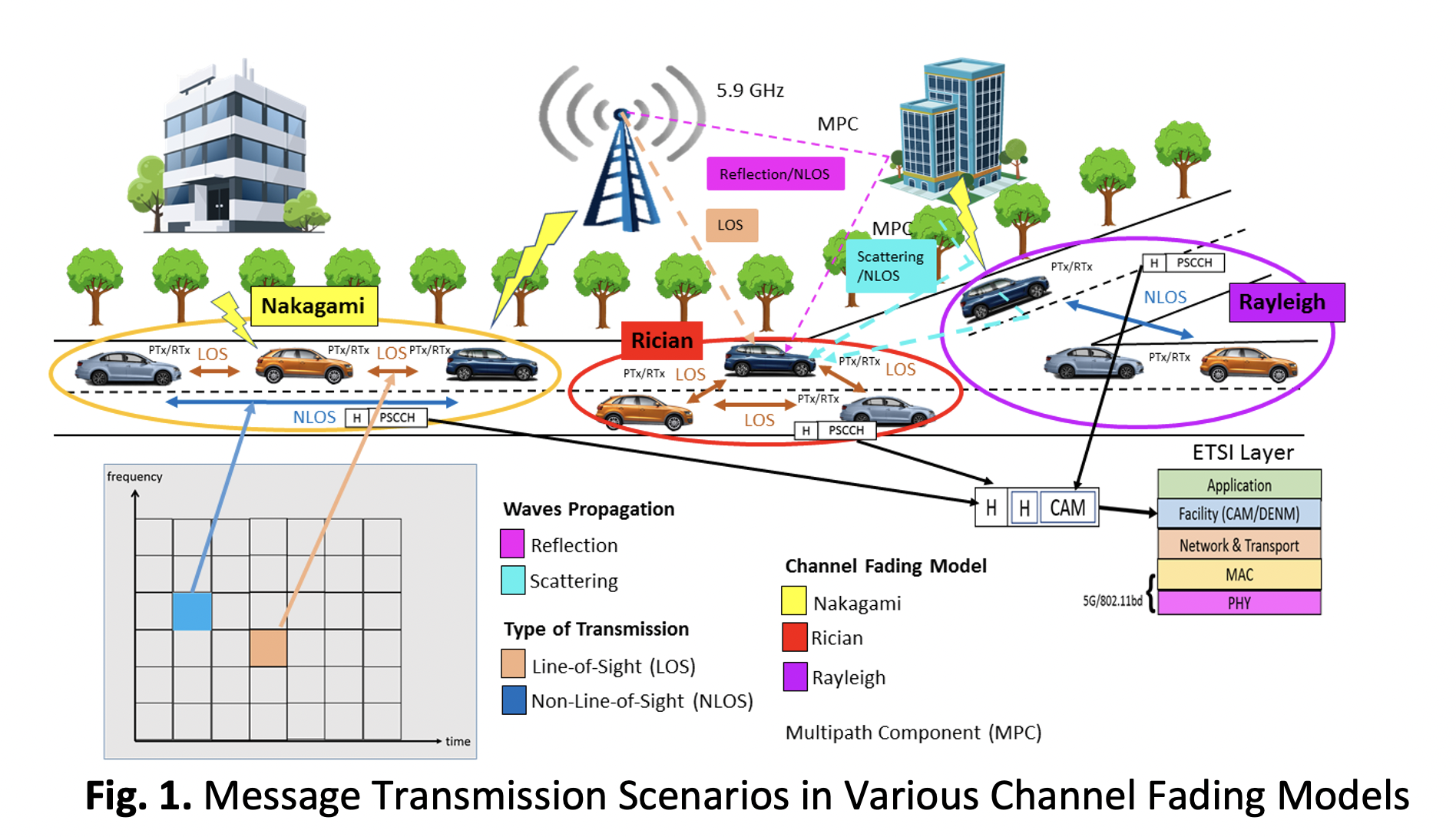Performance Evaluation of CAM Broadcast Message and Vehicle Safe Distance Under Nakagami-m Radio Channel Conditions
DOI:
https://doi.org/10.37934/araset.29.1.245255Keywords:
C-V2X, CAM, Nakagami-m, PDR, ThroughputAbstract
Many potentials exist in the 5G era for effectively managing vehicle safety on the road. The European Telecommunications Standards Institute (ETSI) 5G C-V2X standards for Cooperative Aware Messages for Intelligent Transport Systems (ITS) provide necessary upper-layer requirements for safety message distribution between vehicles using Cooperative Aware Messages (CAM). In addition, the Long Term Evolution (LTE) mobile radio technology in Release-14 has two modes of communication, mode 3 and mode 4, to facilitate vehicle-to-vehicle communications. The focus of this study is on vehicle communications in a mode 3 environment, in which the cellular network chooses and manages the radio services utilised by vehicles for direct vehicle-to-vehicle communication. The performance modelling of Safety Avoidance Time (AT) and safety CAM message broadcast for vehicle-to-vehicle communication in LTE C-V2X under the Nakagami-m radio channel, which has two components, LOS and NLOS, is studied in this thesis. Under the Nakagami-m radio channel, the LOS and NLOS components will affect the CAM message disseminating to other vehicles within safe time gaps. Therefore, the aim of this study is to look into the various radio channel characteristics in a vehicle-to-vehicle communication environment that are related to CAM message dissemination and vehicle safe distance, as well as to evaluate the performance of the relationship between PDR, throughput, and transmit power proportional to safe time gaps under the Nakagami-m radio channel with various setting shape factors.Downloads

Downloads
Published
2023-01-02
How to Cite
Nurul Syuhada Shaari, Mohd Sayuti Hassan, & Siti Fairuz Mohd Radzi. (2023). Performance Evaluation of CAM Broadcast Message and Vehicle Safe Distance Under Nakagami-m Radio Channel Conditions. Journal of Advanced Research in Applied Sciences and Engineering Technology, 29(1), 245–255. https://doi.org/10.37934/araset.29.1.245255
Issue
Section
Articles




























